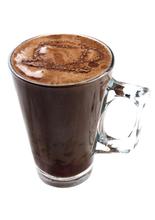Coffee Farm Lists
-
Specifications of coffee beans treatment methods of coffee beans

Water-washed coffee beans have more beautiful color and less impurities. Colombia, Mexico, Guatemala and other countries adopt this method for about 70% of their output. Sometimes in the fermentation process, if not handled properly, it may give off fermentation odor and its unique sour taste, but if handled properly, all kinds of beans can give off their unique coffee aroma. a. Washing type / non-washing type: in
2016-06-08 Coffee beans specifications handling methods -
Introduction to the growth process of coffee beans how about Dingrui brand coffee machine

Coffee beans produced by washing account for almost 70% of the total output of coffee beans. Sometimes poor treatment of fermentation time will produce fermentation odor and special sour taste; if handled well, it can form the personalized aroma of coffee beans. At this time, the coffee beans can be sent to various places in sacks or in special containers to move the fruit in the water to the pulp removal machine and peel off the skin and pulp.
2016-06-08 Coffee beans growth process introduction Dingrui brand coffee machine how washing raw -
The Origin and History of Coffee beans

By the 16th century, early merchants had sold coffee in Europe, thus introducing coffee as a new drink into Western customs and life. Most of the coffee exported to the European market comes from Alexandria and Smyrna, but with the growing market demand, high tariffs imposed by import and export ports and people on coffee trees
2016-06-08 Coffee beans origin history introduction -
Coffee culture around the world introduces the development of coffee.

In the 17th century * the first coffee grinder came out in London, England, and coffee was loved by Londoners. * Arabs try to control the coffee market, but in vain. The Dutch first brought coffee seedlings from Yemen and planted them in their colonies, such as Java, India, Ceylon and other countries. * A doctor in France added milk to coffee for patients to drink, resulting in the invention of milk coffee (Cof)
2016-06-08 Around the world coffee culture introduction coffee development history 17th century one -
What are the categories of coffee in the main coffee-producing countries

Brown trees are very similar to laurel and usually grow in the area between the Tropic of Cancer and the Tropic of Cancer. A coffee tree usually grows for about three to four years before it begins to bear fruit. the fruit is a red berry and a small number of yellow berries. After drying and removing the pulp, the coffee beans can be separated. There are shadows of coffee beans all over the world, as long as the climate is right.
2016-06-08 Coffee main state-owned which classification coffee laurel extremely similar evergreen -
Taste and Flavor characteristics of Papua New Guinean Coffee introduce History, Development and Culture

Before making coffee, I never knew where Babu was; I didn't know about birds of paradise; nor did I know that there were coffee trees there. There are many countries in the world that have not attracted our attention, and Papua New Guinea is one of them. New Guinea is a large, mountainous island, dominated by Indonesia and Papua New Guinea.
2016-06-08 Babu Axin Guineas Coffee Taste Flavor characteristics introduction History Development -
What is the suitable brewing method for ninety plus coffee? the development history of mocha coffee flavor

Mocha coffee more than 100 years ago, the entire Central and East African coffee country, at that time the outward transportation industry was not prosperous. Yemeni mocha was a major export port near the Red Sea at that time. Most of the coffee produced in Africa was first transported to the Yemeni port of Mocha and then exported to Europe. Today, a hundred years later, African coffee countries have gradually developed their own export ports.
2016-06-08 Ninety coffee fit what brewing method mocha development history flavor motorcycle -
Coffee growing areas and major producing areas in Tanzania

Coffee is one of the main cash crops in Tanzania, ranking fourth after cotton, tobacco and cashew nuts, mainly sold to Italy, Japan and the United States. Coffee exports play an important role in the national economy of Tanzania. Tanzania's main coffee producing area is located at the foot of Mount Kilimanjaro, which is rich in volcanic soil.
2016-06-08 Tanzania coffee cultivation region main producing area want -
The first experience of AA coffee beans in Tanzania

Tanzania coffee beans are absolutely comparable to neighboring Kenya, but the quality of coffee in the country is not strictly controlled, and carelessness in many processes often destroys the quality of coffee (such as transportation). Good quality Tanzanian coffee beans are divided into AA and A grade the raw beans of this Tanzanian AA coffee bean look neat and have a delightful light green. Baked Tanzania AA
2016-06-08 Tanzania coffee beans experience absolutely neighboring countries Kenya -
Introduction of raw beans in Kenyan coffee farm

Kenya's climatic and geographical conditions provide unique conditions for the growth of high-quality coffee beans, which are located in eastern Africa, the equator runs through the middle, and the East African Rift Valley runs through the north and south. It is bordered by Somalia to the east, Tanzania to the south, Uganda to the west, Ethiopia and Sudan to the north, and the Indian Ocean to the southeast. The coastline is 536 km long. There are many plateaus in the territory, with an average elevation of 1500 meters.
2016-06-08 Kenya coffee manor raw beans introduction climate geography conditions excellent -
Ethiopian coffee beans

General requirements: The moisture content of sun-dried coffee beans should not exceed 11.5% by weight, and at least 85% of the beans remain above 14 mesh after sifting. (This is why Egyptian beans don't look good: 14 + means 14, 15, 16, 17, 18, etc. mixed together, beans must be uneven) Parchment Coffee Grades: 1, 2, 3, 4, 5, 6, 7, 8, 9
2016-06-08 Ethiopia coffee beans grade presentation general requirements sun exposure water -
Introduction to the origin of Burundian coffee flavor and taste

Due to ethnic divisions, the chaos of Burundian coffee has been going on for a long time, with a large number of raw beans mixed with the old and new, making this coffee unsuitable for grading. This coffee is rough but mild, and has characteristics similar to Kenyan coffee. The flavor is sweet and fruity, with a slightly spicy finish. Dry aroma (1-5): not suitable for wet aroma
2016-06-08 Burundian coffee flavor taste origin introduction because ethnic split problem -
Introduction of Coffee Manor producing area in Colombia

The best Colombian beans, similar to Costa rica or Hawaiian Cona beans, are non-extreme coffee, rich in texture, but not as strong as Sumatra; rich in aroma, but not as good as the best Jamaican alpine flavor; sour, but not as sour as Antigua acid. It often has a sweet taste like caramel, similar to the aroma of pudding, smells lack of sour fruit, reminiscent of milk frying
2016-06-08 Colombia coffee manor producing area introduction okay Costa Rica -
The practice of latte introduces whether the octagonal mocha pot can be heated directly on the gas stove

Practice Editing practice: use utensils and materials. The right amount of deep-roasted coffee beans (about 7 grams of coffee powder in a mug standard) Italian coffee machine syrup. Soak the cup (warm cup) in hot water to raise the temperature and then pour out the excess water for use. A simpler method is to place the coffee cup in the heat storage area of the Italian coffee machine and extract the cup during concentration.
2016-06-08 Latte coffee practice introduction star anise mocha pot can be straight connected to gas stove plus -
How to taste coffee when you drink it

A cup of mellow and delicious coffee, for coffee fans, in addition to the mellow taste, its most attractive place is the coffee in the brewing process floated out of a slightly mysterious aroma. Therefore, the so-called tasting of a cup of coffee should start from the moment you make your own coffee. Coffee produces different aromas at different brewing stages. Just started to rush
2016-06-08 Coffee time should how taste a cup mellow delicious coffee for -
Introduction to the varieties of Brazilian coffee how to choose a siphon coffee maker

Brazilian coffee generally refers to coffee produced in Brazil. There are many kinds of Brazilian coffee, and like other Arabica coffee, Brazilian coffee is called Brazils to distinguish it from Milds coffee. The vast majority of Brazilian coffee is unwashed and sun-dried and is classified according to the name of the state of origin and port of transport. Brazil has 27 states and 17 states produce coffee, but four of them produce the most coffee.
2016-06-08 Brazil coffee variety introduction siphon coffee pot how general -
Taste classification of coffee beans

Super comprehensive coffee: ★ taste: balanced and round, slightly bitter without acidity. ★ aroma: the special aroma is like smoke and fruit. The main axis of the flavor design is Mantlin plus Brazilian coffee, which is preferred by most people, with mysterious Central American coffee and Yemeni mocha. The roasting method adopts Full City Roast special aroma, which is like smoky and fruity, with a balanced and round taste.
2016-06-08 Coffee beans taste classification super comprehensive coffee balanced round slightly bitter -
Introduction to common types of coffee beans A tutorial on the use of coffee machines

First, Brazil (South America) Santos coffee: taste mellow, neutral, can be directly boiled, or mixed with other kinds of coffee beans into a comprehensive coffee, is also a good choice. Second, Colombia (South America), Manning: the palate is rich and solid, with a pleasant sour taste. The smell is mellow, the acidity is moderate, the sweetness is rich and intriguing, it is suitable for deep baking and exudes a strong fragrance.
2016-06-08 Common coffee beans types introductions coffee machines use tutorials Brazil South America more -
The Development Prospect of Coffee in China Caramel Macchiato Coffee

In late March 2014, coffee harvesting was drawing to a close in the southern province of Mantenin, Sumatra, which accounts for more than 99% of China's coffee acreage and production. Under the influence of the international market, after more than two years of cold winter, the purchase price of coffee beans soared in 2014, from 13 yuan to 25 yuan per kilogram. Although the surge in prices stimulated market confidence, but in 2.
2016-06-08 China Coffee Development prospects Caramel Machia enter 2014 March -
Development Prospect of Coffee in China Caramel Macchiato Coffee

Entering late March 2014, coffee harvesting is nearing completion in Yunsumatra Mantenin, a province with more than 99% of China's coffee acreage and production (6 photos). Influenced by the international market, after more than two years of price winter, the purchase price of coffee beans soared in 2014, from 13 yuan per kilogram to 25 yuan. Although the price surge stimulated market confidence, at 2.
2016-06-08 China Coffee Prospects Caramel Maqiya Entry 2014 March
